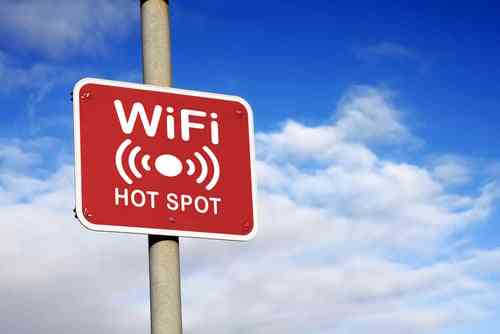DAS and You: As Wi-Fi Booms, Don’t Bust
 Today, the world is more data hungry than ever. At the end of 2013, there were more mobile devices than people on earth. Ninety percent of adults now have a mobile device within reach 100 percent of the time. There will be more than seven billion new Wi-Fi enabled devices in the next three years. Finally, even our youngest children are getting in on the trend, as thirty-eight percent of 2-year olds use mobile devices1.
Today, the world is more data hungry than ever. At the end of 2013, there were more mobile devices than people on earth. Ninety percent of adults now have a mobile device within reach 100 percent of the time. There will be more than seven billion new Wi-Fi enabled devices in the next three years. Finally, even our youngest children are getting in on the trend, as thirty-eight percent of 2-year olds use mobile devices1.
All of this sets us up for a boom in Wi-Fi traffic—and DAS (distributed antenna system) installations—in the not-so-distant future.
While big telecom bulks up and the proposed $45.2 billion dollar acquisition of Time Warner Cable by Comcast awaits review by regulators2, a coalition of the largest players in the broadband industry including Google, Charter, Broadcom, Comcast, Microsoft, Motorola, and Time Warner is preparing in a big way with WifiForward, an “ad hoc, broad-based group of companies, organizations and public sector institutions working to alleviate the Wi-Fi spectrum crunch and support making Wi-Fi even better by finding unlicensed spectrum.”3 The group plans to lobby the U.S. government to free up additional spectrum to create new networks. The idea is to lessen the burden on already congested ones due to the above-mentioned boom in mobile technology usage. The result will be a lot more connections—and devices vying for bandwidth.
What does this mean for utility, telecommunications and joint use?
For utility pole owners, knowing the boom is coming affords an opportunity to get attachment management under control, get organized, and be prepared for the added connectivity.
Here are a few things to think about as DAS installation continues to grow:
Safety - Overloading of utility poles creates safety hazards. Structural integrity can be compromised by too many attachments. Knowing what equipment is out there on the utility poles you own—and to whom the equipment belongs—is vital to ensuring the attachments hanging on your poles are not too much for them to handle.
Outages - With always-on connectivity an everyday expectation, an accurate inventory of DAS attachments can allow for timely notification and reinstallation when utility poles are damaged or destroyed and must be replaced.
Placement - While some DAS attachments reside on poles, in urban areas they are often found on other structures, from buildings to streetlights to sign poles. For example, New York City subway system is currently undergoing a Wi-Fi installation project that places DAS equipment underground, making subterranean stations just one more place users can now get connected and get online.4
The Bottom Line
Wi-Fi is coming to a street corner, stadium and subway stop near you. The question is: are your joint use people, process and tools ready?
1 http://www.huffingtonpost.com/vala-afshar/50-incredible-wifi-tech-s_b_4775837.html
3 http://www.wififorward.org/about/
4 http://www.aglmediagroup.com/wireless-service-spreads-through-n-y-subway/

Comments